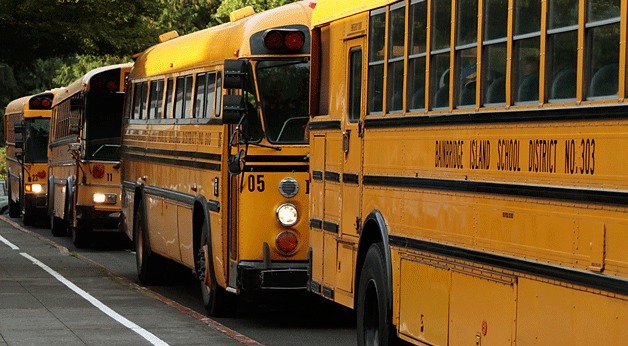A Bainbridge Island isn’t immune to one of the most reckless acts on the road: Drivers passing a stopped school bus.
Schools across Washington state recently participated in a one-day survey with other schools nationwide to see how often drivers pass school buses that are stopped to pick up children.
Coordinated by the National Association of State Directors of Pupil Transportation, the survey asked states to choose a day and have bus drivers record the number of vehicles that passed stopped buses. The survey also captured information about when the passing occurring, the direction from which the passing occurred and the side of the bus on which the passing occurred.
A total of 29 states, including Washington, completed the survey, according to the Office of Superintendent of Public Instruction.
Of the 29 states, 108,436 buses participated and recorded 85,279 instances of passing.
The survey was conducted in Washington state on May 1. On that day, 3,588 bus drivers in 110 districts responded, recording 1,523 violations.
On Bainbridge Island, 25 bus drivers participated in the survey.
On the day of the survey, only one driver reported getting passed. The incident occurred in the morning, and the driver noted getting passed by a driver heading in the opposite direction.
Bainbridge’s low number of incidents paled in comparison to other school districts in Puget Sound.
The North Kitsap School District had 50 bus drivers participate, and drivers reported that eight school buses were passed while they were stopped; six of them during the afternoon hours.
In Seattle, 374 bus drivers participated and said 318 buses were passed. The numbers were nearly evenly split between morning and afternoon incidents; 151-157. Ten additional incidents occurred at mid-day.
Randy Dorn, Washington’s superintendent of public instruction, said bus passing incidents are a serious problem.
“Every violation represents a potential accident and potential injury to a student,” Dorn said.
Dorn noted that extrapolating the data to the state’s 295 districts and for a 180-day school year would result in nearly 550,000 violations.
Dorn also said districts could help cut down on the numbers of violations by installing cameras on school buses.
“Legislation was passed in 2011 that gave districts the authority to place cameras in buses so that pictures can be taken of the violators and they can be ticketed,” Dorn said. “I urge districts to look into whether installing the cameras is the right thing for that community.”



